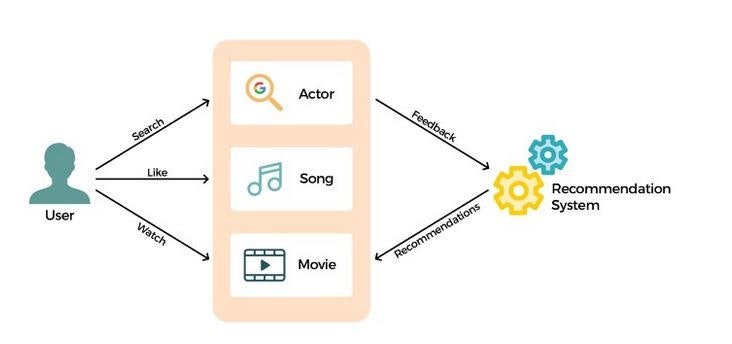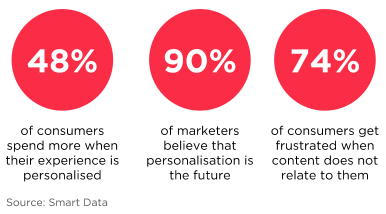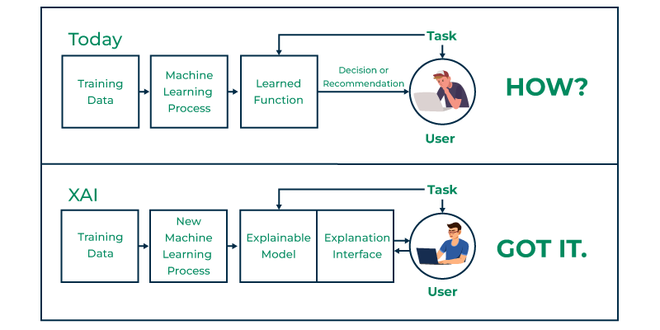Introduction
We live in an era where algorithms know us better than our closest friends. AI-driven behavioral targeting is the digital equivalent of a hyper-focused salesperson and it promises tailored experiences.
But is it a helpful assistant or an invasive overlord? As AI dives deeper into our online lives, it's time to question the fine line between personalized convenience and privacy erosion.
In this article, we consider the complexities of AI-driven behavioral targeting, examining its pitfalls and exploring strategies to mitigate ethical risks.
What is Behavioral targeting?
Behavioral targeting is a marketing strategy that delivers ads based on a user's online activities. It has evolved significantly with the integration of artificial intelligence. AI's ability to analyze vast amounts of data has refined the process, enabling more precise targeting and personalized ad experiences.
While this offers substantial benefits to both advertisers and consumers, it also raises critical ethical questions.

The Power and Potential of Using AI in Behavioral Targeting
AI has changed the landscape of digital advertising, particularly in the field of behavioral targeting. Different brands are harnessing the power of data and complex algorithms to significantly enhance the precision and effectiveness of ad campaigns.
Majors Ways Businesses Benefit From AI-driven Marketing
According to McKinsey, nearly 8 in 10 consumers reward brands with personalized experiences. AI-driven behavioral targeting offers numerous advantages for businesses.
Firstly, it boosts targeting accuracy by analyzing vast datasets to identify consumer preferences and behaviors with unprecedented precision. This allows advertisers to deliver ads to the most relevant audience, increasing the likelihood of conversions.
Secondly, AI enables highly personalized ad experiences. Through customer segmentation with AI and tailored content, AI startups and businesses can build stronger customer relationships and promote brand loyalty. Ultimately, these improvements in targeting and personalization lead to a higher return on investment (ROI) as ad budgets are allocated more efficiently.

Examples of Successful Companies Using AI for Behavioral Targeting
The potential of AI in business intelligence is evident in numerous successful campaigns by businesses across different niches. Almost every big brand uses data analysis in some way.
For instance, e-commerce giant Amazon leverages AI to provide highly personalized product recommendations based on users' browsing and purchase histories. This tailored approach has driven significant sales growth. Additionally, streaming platforms like Netflix utilize AI to analyze user preferences and suggest shows or movies likely to be enjoyed, resulting in increased user engagement and retention.
In the travel industry, platforms like Booking.com and Expedia employ AI to analyze user behavior and offer personalized recommendations for hotels, flights, and vacation packages. By analyzing user preferences and past travel patterns, these platforms deliver highly relevant options, increasing booking rates and customer satisfaction.
Positive Impacts For Consumers
Customers are not left out; AI-driven behavioral targeting offers several advantages for consumers, extending beyond simply delivering ads. With individual preferences and behaviors identified, advertisers can create a more tailored and beneficial user experience. Here are some of the positive impacts of using AI for behavioral targeting:
Delivery of more relevant ads: Consumers are less likely to be bombarded with irrelevant content, improving their online experience.
Personalized offers and recommendations: Users can benefit from customized deals and product suggestions that align with their interests.
Discovery of new products and services: AI can introduce consumers to previously unknown items that match their preferences.
Enhanced customer experience: Tailored interactions can increase customer satisfaction and loyalty.
Potential cost savings: Personalized offers and recommendations can help consumers find the best deals and avoid impulse purchases.
Privacy Concerns of Using AI for Behavioral Targeting
The extensive data collection required for AI-driven behavioral targeting raises significant privacy concerns. AI systems gather a wide range of information, including browsing history, search queries, demographics, location data, and purchasing behavior. This data is used to create detailed user profiles that inform ad targeting.
Data privacy regulations such as the European Union's General Data Protection Regulation (GDPR) and the California Consumer Privacy Act (CCPA) have been enacted to protect individuals' rights. These laws impose stringent requirements on data collection, storage, and usage. Non-compliance can result in substantial penalties.
User Consent
Obtaining informed consent is crucial for ethical data practices. Users should clearly understand how their data will be used and have the right to opt out of data collection or sharing. Transparency about data collection and usage policies is essential to build trust between businesses and consumers.
Data Breaches and Security
Data breaches pose a significant threat to both businesses and consumers. Cybercriminals constantly seek vulnerabilities to steal sensitive information for financial gain or malicious purposes. The consequences of a data breach can be devastating, including financial loss, reputational damage, and legal liabilities.
To mitigate these risks, robust security measures must be in place. Organizations must invest in:
Encryption, firewalls, and access controls to protect user data.
Employee training on data security best practices to prevent human error.
Regular security audits and updates to security protocols to stay ahead of evolving threats.

Bias and Discrimination in AI-powered Contextual Targeting
Algorithmic bias
AI algorithms are not inherently neutral; they can perpetuate existing societal biases. These biases can be embedded in the data used to train the algorithms or within the algorithms themselves.
For example, if historical data reflects discriminatory practices, an AI system trained on this data may replicate those biases in its outputs. This can lead to situations where certain groups are disproportionately exposed to specific types of ads or excluded from relevant offers, for example, Facebook's discriminatory ad targeting.
Impact on marginalized groups
Marginalized groups are particularly vulnerable to the negative impacts of algorithmic bias. For instance, AI-driven targeting may amplify stereotypes or reinforce existing inequalities. Women, minorities, and other underrepresented groups could be subjected to discriminatory advertising practices, limiting their opportunities and perpetuating social disparities.
The Importance Of Fairness
Fairness and accountability must be core principles in AI development and deployment. Regular audits, bias testing, and transparency are essential to identify and address biases. Additionally, diverse teams should be involved in AI development to ensure different perspectives are considered. If fairness and accountability are prioritized, the industry can work towards creating AI systems that benefit everyone without discrimination.
Consumer Manipulation and Exploitation
Dark patterns and manipulative tactics
AI-driven behavioral targeting can be exploited to create persuasive and manipulative ad experiences. Dark patterns, deceptive design elements that trick users into actions they wouldn't normally take, can be amplified by AI. For instance, AI can analyze user behavior to identify vulnerabilities and tailor ads that exploit those weaknesses. This can include creating a sense of urgency, scarcity, or fear to drive impulsive decisions. Additionally, AI can personalize content to mimic social proof, making users more likely to trust recommendations and make purchases.
Impact on consumer behavior
The potential for AI to influence consumer choices and decision-making is profound. These tools understand user preferences and behaviors at a granular level. Thus, advertisers can craft messages that resonate deeply, potentially overriding rational decision-making processes. This can lead to impulsive purchases, subscription traps, and overspending.
Furthermore, AI can be used to create addiction-like behaviors, as users are constantly rewarded with personalized content that reinforces engagement.
Ethical advertising practices
To mitigate the risks of manipulation and exploitation, ethical advertising practices are essential. Transparency is paramount; advertisers should clearly disclose data collection and usage practices.
Respecting consumer autonomy is crucial, as is avoiding deceptive tactics and manipulative design elements. Advertisers should prioritize the long-term benefits of trust-building over short-term gains.
Additionally, industry self-regulation and government oversight can play a role in enforcing ethical standards. By adhering to these principles, the advertising industry can maintain consumer trust and ensure that AI is used for the benefit of both businesses and consumers.
Ethical advertising practices
Transparency: Clearly disclose data collection and usage practices.
Respect for consumer autonomy: Avoid deceptive tactics and manipulative design elements.
Prioritize long-term trust over short-term gains.
Industry self-regulation and government oversight to enforce ethical standards.
Ensuring Transparency and Accountability in AI
In this section, let's go over approaches that can help ensure transparency and accountability when using predictive analytics in marketing and user experience.
Explainable AI
Transparency in AI systems is crucial for building trust. Explainable AI (XAI) is the concept of making AI algorithms understandable to humans. When AI systems make decisions that impact individuals, it's crucial to be able to explain the reasoning behind those decisions.
This not only helps in identifying biases but also allows for accountability. For instance, if an AI system denies a loan application, the reasons for this decision should be explainable to both the user and regulators.

Auditing and Monitoring
Regular audits and monitoring of AI systems are essential to identify and address potential issues. This includes assessing the algorithms for bias, accuracy, and fairness. Additionally, monitoring data quality and usage is crucial to prevent misuse. With robust auditing and monitoring processes, organizations can proactively identify and rectify problems, reducing the risk of negative consequences.
Government Oversight
As the implications of using AI for behavioral targeting become increasingly apparent, the role of government regulation has come under scrutiny. Governments worldwide are grappling with the challenge of balancing innovation with consumer protection and societal welfare.
Regulatory measures include data privacy laws, consumer protection regulations, and industry-specific guidelines. Through these clear rules and enforcement mechanisms, governments can ensure that AI-driven advertising operates within ethical boundaries.
Additionally, governments can play a role in promoting public awareness about AI and data privacy. Educating consumers about their rights and the risks associated with data sharing can empower them to make informed choices.
Regulation vs. Innovation
Excessive regulation could stifle innovation and hinder the growth of the digital economy. Finding the right balance between regulation and innovation is crucial.
Ultimately, effective government oversight requires collaboration between policymakers, industry stakeholders, and civil society to develop comprehensive and adaptable regulatory frameworks.
Future Directions and Recommendations
Addressing the ethical challenges posed when using AI for behavioral targeting requires a multifaceted approach. This final section outlines potential strategies for fostering a future where AI is used responsibly and beneficially.
Ethical Frameworks
Developing comprehensive ethical frameworks for AI-driven behavioral targeting is imperative. These frameworks should outline principles for data collection, usage, and privacy, as well as guidelines for algorithmic fairness and transparency. Industry-wide adoption of such frameworks would create a level playing field and foster consumer trust.
Industry Collaboration
Collaboration among tech companies, advertisers, and policymakers is essential for addressing the complexities of AI-driven behavioral targeting. By working together, stakeholders can develop shared standards, best practices, and solutions. This collaborative approach can accelerate the development of ethical AI systems and mitigate potential risks.
Consumer Education
Educating consumers about AI and data privacy is crucial for empowering individuals to avoid exploitation. Raising awareness about data collection practices, the potential impact of behavioral targeting, and steps to protect personal information can help consumers exercise greater control over their data.
Research and Development
Continued research into AI ethics and bias mitigation will help in the responsible development and deployment of AI systems. Investments in research can lead to innovative solutions for addressing challenges such as algorithmic fairness, privacy preservation, and consumer protection. Collaboration between academia, industry, and government can accelerate progress in this area.
Conclusion
AI-driven behavioral targeting presents a complex interplay of opportunities and challenges. While offering potential benefits to businesses and consumers, it also raises serious ethical concerns, including privacy breaches, algorithmic bias, and consumer manipulation. It is critical to approach AI-driven advertising with a strong ethical compass.
A responsible and ethical approach requires transparency, accountability, and a commitment to fairness. These can help in shaping a future where AI is used as a force for good. Consumers should remain vigilant, critically evaluating the information they share and the ads they encounter.
Ultimately, the success of AI-driven behavioral targeting depends on a shared commitment to human values and the well-being of society. This is also where good AI UX design practices come in. Working with a UX design agency that understands these ethical challenges can help in achieving products and experiences with the users’ interests at heart.
FAQs
Is AI in advertising good or bad?
AI can personalize ads, making them more relevant. However, it can also raise privacy concerns and lead to biased targeting. The key is using AI responsibly.
Can AI target me unfairly?
AI algorithms can perpetuate biases based on the data used to train them. This could lead to unfair targeting, like receiving only ads for certain types of jobs or products.
How can AI make online shopping more efficient?
AI can personalize your shopping experience by suggesting relevant products and streamlining the checkout process. This can save you time and frustration while shopping online.





